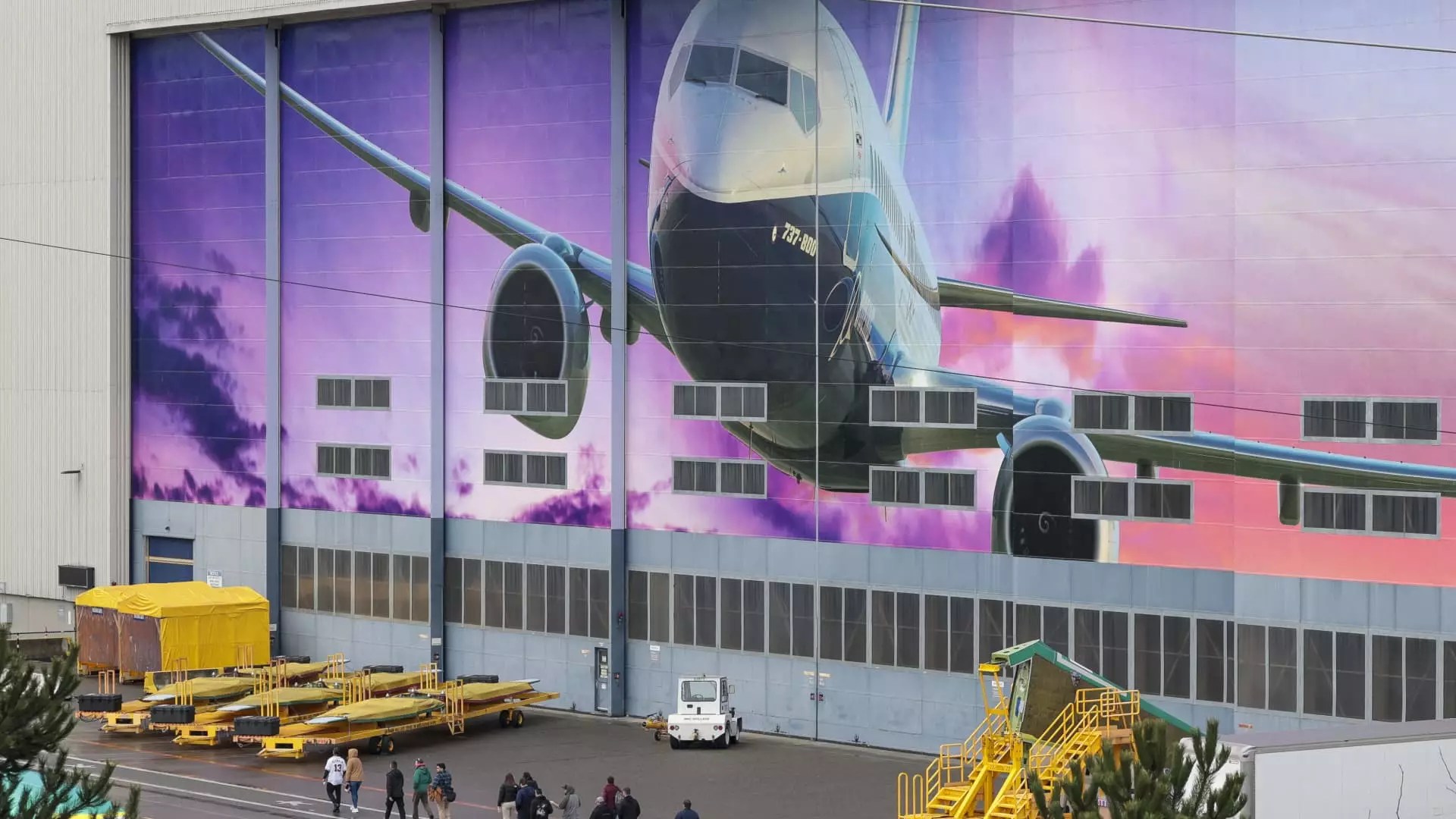Boeing, a titan of the aerospace industry, has been under immense scrutiny over the past few years, and for good reason. The company’s cash burn has been a key concern, with expenditures reaching upwards of $14 billion last year alone. However, recent statements from CFO Brian West suggest that this tide may be shifting. The prospect of reducing cash burn by “hundreds of millions” sends a positive signal to investors. One must wonder, though, what sacrifices are being made to achieve this reduction. It’s reassuring to see progress, but it is paramount for shareholders to remain vigilant about the long-term sustainability of this newfound financial strategy.
Manufacturing Hurdles: Past Shadows Looming
Boeing’s efforts to ramp up production capabilities are indeed commendable, yet they are not without their challenges. The company aims to reach a monthly output of 38 737 Max aircraft and seven 787 Dreamliners, despite the recent fire at a Pennsylvania fastener factory that raised red flags. While West assures that this setback won’t hinder production in the short term, skepticism is warranted. Boeing’s history of safety and manufacturing crises casts a pall over such optimistic projections. It is crucial to examine the broader context: Are these fast recovery plans genuinely indicative of progress, or simply a façade to satisfy market demands?
The Role of Regulatory Oversight
Regulatory bodies, particularly the FAA, have kept a tight grip on Boeing’s operational capabilities, further complicating the road to recovery. The FAA’s cap on production rates serves as both a safety net and a shackle, preventing Boeing from fully flexing its production muscle. It’s a double-edged sword; while it promotes safety, it also stifles the potential for rapid growth and recovery. As the new Transportation Secretary Sean Duffy maintains this cap, one must critically assess whether Boeing’s aspirations can survive such stringent oversight. Is it possible for a corporate giant to innovate and lead within such constraining regulations, or will it be forced to adapt to a ‘safety-first’ mentality that stifles ambition?
Global Trade Turbulence: Tariffs and Their Impacts
There are also looming uncertainties on the trade front, particularly regarding President Donald Trump’s proposed tariffs. West’s optimistic nonchalance regarding these developments seems blind to the catastrophic ripples they could create in the aerospace sector. Tariffs could inflate costs, disrupt supply chains, and compel Boeing to reconsider its financial forecasts yet again. Investors should not dismiss these implications lightly; economic environments can shift rapidly. A forward-looking perspective is essential here—will Boeing rise to the challenge or become ensnared in external pressures that compromise its recovery?
Investor Confidence: Cautiously Optimistic
Finally, it’s essential to note how the market has responded to these updates. A nearly 7% increase in Boeing shares following West’s remarks shows a flicker of investor optimism. However, one cannot ignore the margin of skepticism that persists. Investors are not simply looking for surface-level recoveries; they demand credibility and a demonstrated ability of Boeing to learn from past mistakes. For Boeing, navigating this complex web of financial recovery, regulatory oversight, and geopolitical dynamics will be no easy feat. If the company can genuinely align its operations with the expectations of both regulators and investors, it might finally reclaim its position as a leader in the aerospace industry.


Leave a Reply